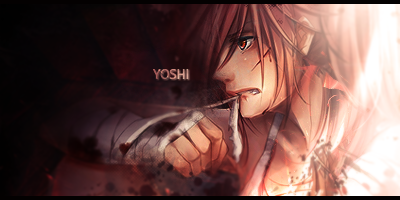The Doctor's Manor Training (Private)
Sept 9, 2015 19:46:10 GMT -7
Post by The Doctor on Sept 9, 2015 19:46:10 GMT -7
Learning Blood Spatter Analysis Skill 10 TP, 1 die roll, +1 per Die roll Eidetic Memory
- Blood Spatter Analysis
Rank: "D"
Skill: Skill
Effect: This is a study of blood at the scene of a crime.
Special: ---
Drawback: ---
Description: Characters will be able to get information from the shape of the blood splatter, the amount of blood and its point of origin. A simple pattern is Difficult with more information for every Very Difficult check above the Difficult check (Very Difficult stacks). Difficulty is dependent on the Game Master, or creator of the scenario. Look in Academia Skills thread found in the Skills and Traits Index for more information. If user has 25 or more Ranks in Evidence Analysis user gains a Synergy Bonus +10 to Blood Spatter Analysis. Each time learned user gets 1 die roll to increase the skill.
Limit: ---
Current Skill Counter 118/125
To understand the process of Blood Spatter Analysis the Doctor had to take the terminology that was created and evolve them for his own personal uses. Earlier reports of Blood spatters would be used to associate the physical appearances of stain patterns today. Stains used in the Laboratory were used out in the field. These were necessary to convey a concise and clear observation creating a language for scientists like the Doctor to communicate properly.
There were two trends of terminology most Blood Spatter Analysis like the Doctor would use to convey in terms of blood stains. The first was called "Appearance" which was the physical appearance of stain patterns. The second was called "Mechanism" which was from the mechanism in which the pattern was created.
Bloodstain Patterns are examined carefully. The Doctor would evaluate the physical characteristics of a stain including the size, the shape, the distribution, the location, and the concentration. This analysis of physical properties however was minimal, at least minimal until prior knowledge came to be such as how the blood will be have in known conditions. By evaluating the physical characteristics and appearance of a pattern the Doctor cannot help but to assess the potential mechanism of which the stain was ultimately created from.
The Doctor must have knowledge of the surroundings, the mechanisms of which the bloodstains were created prior to any actual case evaluation. To the Doctor the appearance and mechanism cross paths but the initial evaluation of patterns would be concerned with categorizing bloodstain patterns based by those physical appearance. Then these physical appearance of stains are in conjunction with prior knowledge with how blood tends to behave, which comes to the Doctor's experiments, as well as experiments of the past.
As the Doctor became more familiarized with blood stain patterns he was able to reconstruct past events by evaluating more than the appearance of blood stain patterns. The Analysis of bloodstain patterns was divided into four specific categories. This was called the Logic Tree of Blood Pattern Analysis.
Within Level 1 Analysis there was what was called Bloodshed Event, and Bloodstains. Level 2 Analysis was the Evaluate physical characteristics or the appearance of bloodstains along with the Utilize knowledge of the Bloodstain Analysis. Level 3 Analysis was evaluating case facts and access any possible mechanisms for blood stain patterns. Then finally at Level 4 was the reconstruction of bloodshed event.
From within the physical characteristics of blood stain patterns, they may be classified under one of 3 primary bloodstain categories. These three categories were passive or gravity, spatter, and then altered.






![Yoshi [Lynx!] Avatar](http://i.imgur.com/T6iMrr6.png)



